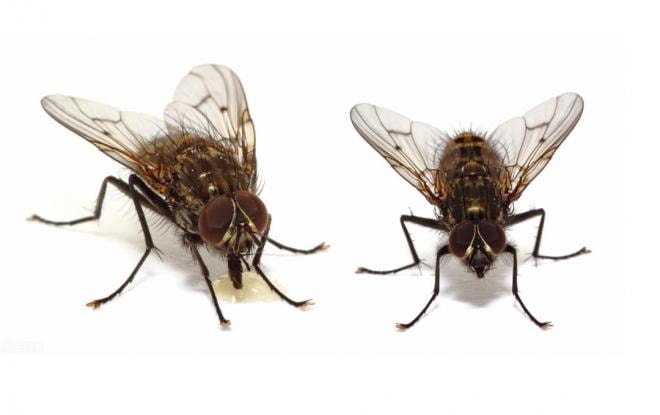When traveling to tropical regions, most people take precautions against mosquito bites and other insect-related risks. However, in certain areas of Central and South America, another rare but important condition occasionally affects visitors and residents alike: cutaneous myiasis. This skin condition is caused by the larvae of certain fly species, most notably the human botfly (Dermatobia hominis).
Although the condition can sound alarming, it is both treatable and preventable. By raising awareness, medical experts hope to provide travelers and locals with the knowledge they need to reduce risks and seek appropriate care if symptoms appear.
What Is Cutaneous
Myiasis

?
Cutaneous myiasis is a parasitic skin infection that occurs when fly larvae penetrate the surface of the skin and develop within the tissue. While the condition may be unfamiliar to many outside of tropical medicine, it has been documented for centuries in regions where the human botfly is native.
The infection is not common, but when it does occur, it can cause significant discomfort. Early recognition and medical treatment ensure a safe and complete recovery.
How the Botfly Lifecycle Works

The human botfly has a unique reproductive strategy. Instead of laying eggs directly on a host, the adult fly attaches its eggs to a mosquito or other biting insect. When that insect feeds on a human, the warmth of the skin causes the eggs to hatch.
The newly emerged larvae then enter the skin through the bite wound or hair follicles. From there, they remain beneath the skin’s surface, developing over several weeks until they are ready to leave and continue their lifecycle in the soil.
This process is unusual but well understood in tropical medicine. Importantly, it highlights why travelers in endemic regions should be mindful of insect protection, since the initial carrier is often a mosquito.
Symptoms and Signs

The first indication of cutaneous myiasis is often a small, red bump that resembles a mosquito bite or skin irritation. Over time, however, the lesion may change:
-
Redness and swelling around the site
-
Localized pain or tenderness
-
A small central opening, which allows air to reach the developing larva
-
Unusual sensations, sometimes described as intermittent movement beneath the skin
While these symptoms can cause anxiety, they are not typically life-threatening. The main concerns involve discomfort, risk of secondary infection, and the psychological stress of knowing a parasite is present.
Documented Medical Cases
![]()
Several medical journals have reported cases of travelers returning from tropical regions who sought treatment for persistent skin lesions. For example, one traveler from Canada developed skin irritation after visiting Belize. Initially misdiagnosed as an insect bite, further examination confirmed cutaneous myiasis.
Doctors were able to remove the larvae safely, and the patient made a full recovery. Similar cases have been documented in South America and occasionally in other parts of the world among returning travelers.
These medical records provide valuable insight for doctors unfamiliar with tropical diseases, helping them recognize and treat the condition effectively.
Diagnosis
Diagnosis typically involves a physical examination of the lesion. The presence of a small central pore, combined with persistent swelling and discomfort, often points toward cutaneous myiasis.
In some cases, ultrasound or dermoscopy (a magnified skin exam) can be used to confirm the presence of larvae beneath the skin. Early diagnosis helps prevent complications and ensures that treatment is straightforward.
Treatment Options
Treatment for cutaneous myiasis is usually simple and effective:
-
Larva removal: A healthcare professional will carefully extract the larva through the skin opening, often using sterile instruments.
-
Wound care: The site is cleaned thoroughly to prevent secondary infection.
-
Medication: Antibiotics may be prescribed if there is evidence of bacterial infection.
Self-removal is strongly discouraged, as incomplete extraction may lead to infection or further complications. Medical treatment ensures safe and complete recovery.
Prevention Strategies
Travelers and residents in regions where the human botfly is found can take several precautions to minimize risk:
-
Use insect repellent with DEET or picaridin, especially during peak mosquito activity.
-
Wear long-sleeved clothing and pants to reduce skin exposure.
-
Sleep under treated mosquito nets when staying in rural areas.
-
Check clothing and bedding regularly, as eggs can sometimes be deposited on damp fabrics.
These preventive measures not only reduce the risk of cutaneous myiasis but also protect against more common mosquito-borne illnesses such as dengue, Zika, or malaria.
Psychological and Social Impact
Though physically manageable, the psychological impact of cutaneous myiasis can be significant. Patients often report anxiety and distress at the thought of a parasite living beneath their skin. For this reason, medical professionals emphasize the importance of clear communication, reassurance, and prompt treatment.
In communities where the condition is more familiar, cultural understanding helps normalize the experience, but for international travelers, the unexpected nature of the diagnosis can be especially unsettling.
Global Relevance
While cutaneous myiasis is most common in tropical regions of the Americas, increased global travel means doctors worldwide must be aware of it. Physicians in North America, Europe, and Asia occasionally encounter cases in travelers returning from endemic areas.
Raising awareness among healthcare providers ensures faster diagnosis and reduces unnecessary suffering for patients.
Conclusion
Cutaneous myiasis may sound intimidating, but it is a rare and treatable condition. With proper prevention—through insect protection, clothing, and awareness—travelers and residents alike can minimize risk.
For those who do develop symptoms, seeking timely medical care ensures safe removal of the larvae and a complete recovery. Above all, public education helps transform what might seem like a frightening story into a manageable medical reality.
By focusing on awareness, prevention, and prompt treatment, communities and travelers can approach cutaneous myiasis not with fear, but with confidence in modern medicine.
